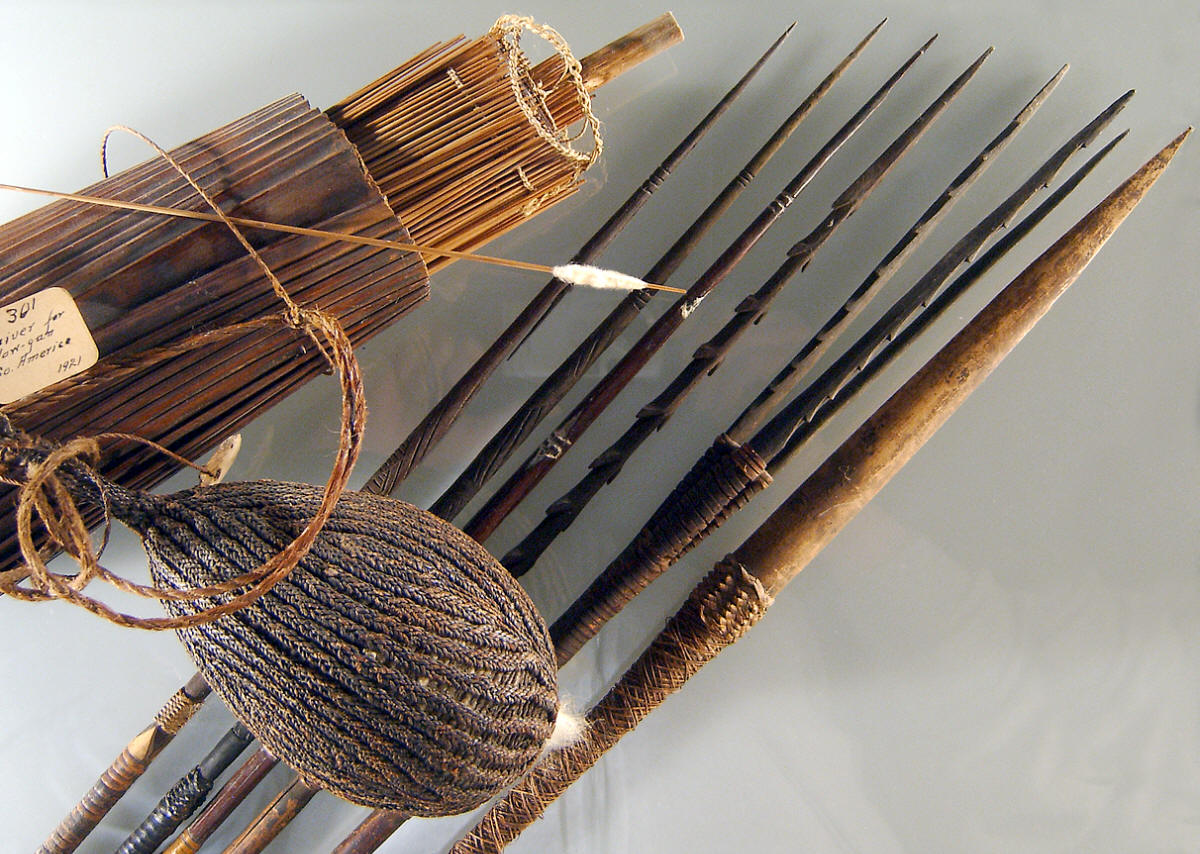|
WOOD AND PLANT FIBER
Wood, bamboo and other plant fibers
were commonly used for the production of arrow points and blowgun
darts. Before the age of metal, these materials were used almost
exclusively for projectile points in areas of dense forests and tropical
jungle. This picture shows six different examples of arrow points, from
New Guinea, that are made of wood and bamboo. The four long round and
barbed points on the left measure about 12 inches (30.5 cm) long. The
cane shafts measure between 36 and 48 inches (91.4 cm to 122 cm) long.
The bamboo point on the right is wide and curved and is designed for
causing wounds that bleed and used to shoot pigs. The arrow second from
the right is a leister design with three prongs that are barbed. This
arrow would be used to shoot fish or birds. The other four points have
very sharp points and are long and narrow with shallow barbs and long
splinter-like barbs. These would be used in warfare to shoot people.
|
